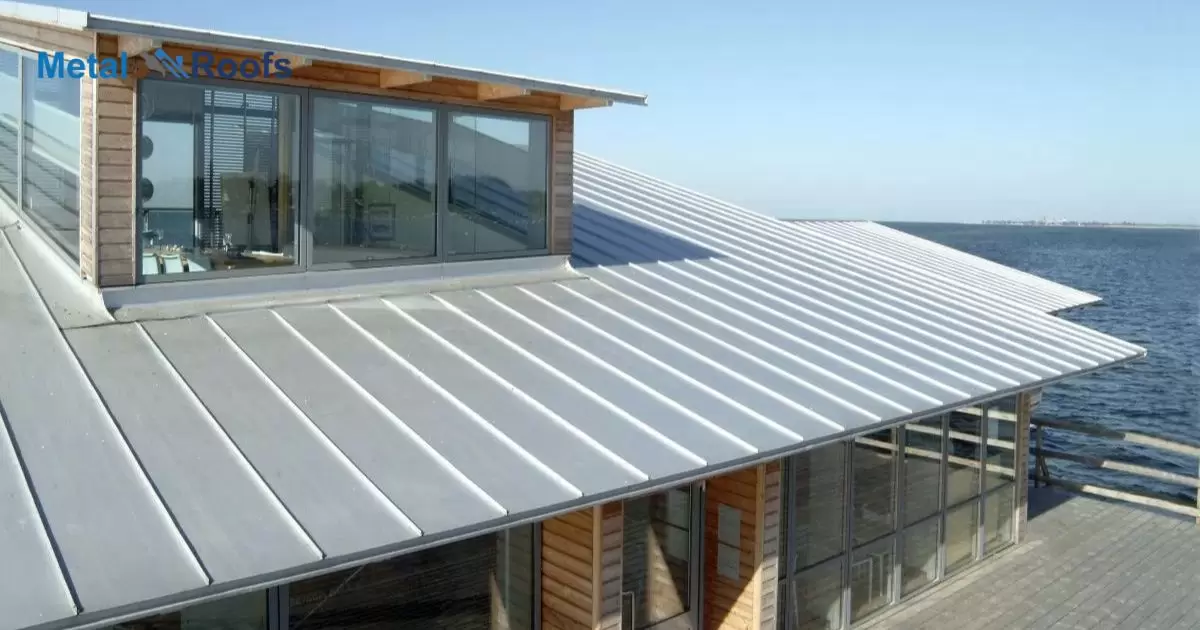Metal roofing comes in panels of various widths and lengths, typically ranging from 12 inches to 5 feet wide and up to 50 feet long, with thickness varying from 29 to 26 gauge, thinner panels being lighter but more prone to dents while thicker ones are more durable but heavier.
Metal roofing comes in panels of different sizes. what are the dimensions of metal roofing? Widths range from 12 inches to 5 feet, lengths reach up to 50 feet. Thickness is measured in gauge, thinner 29 gauge is lighter but dents more easily, while thicker 26 gauge is more durable but heavier.
The size options allow flexibility to cover different roof shapes and spans. Narrow 12 panels work well for compact or curved areas. Wider 4’-5’ lengths cover larger expanses in fewer pieces. Thicker 26 gauge withstands hail and fallen branches better while thinner 29 gauge reduces weight.
Key Takeaways
- Metal roofing dimensions range from 1 to 2 inches for secure seams.
- Precise cutting, marked lines, and sharp tools are crucial for installation.
- Ensure steady pressure while cutting to minimize issues with tar roofs.
- Dimensions play a key role in the durability and weather resistance of metal roofs.
The Basics of Metal Roofing Dimensions
| Aspect | Dimensions |
| Roofing Material | Steel, Aluminum, Copper, Zinc |
| Seam Width | Typically 1-2 inches |
| Panel Length | Varies from 8 to 20 feet |
| Panel Width | Usually 12 to 36 inches |
| Thickness | Ranges from 22 to 29 gauge |
| Overlap Configuration | Varies based on installation |
Metal roofing dimensions play a crucial role in determining the effectiveness and aesthetics of your roofing system. These dimensions encompass the width, length, and thickness of the metal sheets used.
Typically, metal roofing sheets come in standard widths, ranging from 24 to 36 inches, with variable lengths to suit different roof sizes. Custom options are available for specific needs, including addressing concerns such as metal roof thermal expansion noise.
Metal Roofing Width
Metal roofing width plays a crucial role in its performance. Typically, these roofs come in standard widths ranging from 24 to 48 inches. The choice of width depends on factors like the building’s design and the desired aesthetic. It’s worth noting that wider panels can often mean faster installation, reducing labor costs.
A key advantage of metal roofing is its ability to be customized to fit the unique dimensions of any structure. This versatility ensures a seamless fit, enhancing both functionality and visual appeal. Whether it’s for a residential home or a commercial building, the width of metal roofing panels contributes significantly to the overall efficiency and durability of the roofing system.
Weight Considerations
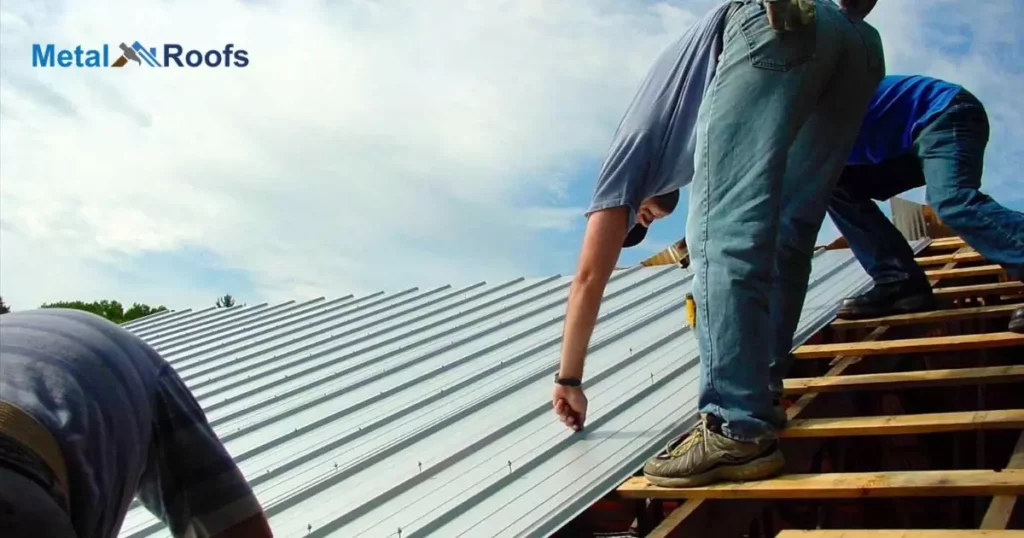
When it comes to metal roofing, weight is a crucial consideration. The materials used in metal roofs are generally lightweight, reducing the load on the structure. This characteristic not only makes installation easier but also puts less strain on the building’s framework.
Lightweight metal roofing has an added advantage in terms of structural integrity. Unlike heavier alternatives, it minimizes the risk of overloading and potential stress on the supporting structure. This weight efficiency not only contributes to a simpler installation process but also ensures long-term durability without compromising on the building’s structural stability.
Box Profile Steel Roofing Sheet Size
Metal roofing sheets come in various dimensions, and the box profile steel roofing sheet is a popular choice. These sheets typically measure around 32/1000, referring to their coverage width of 32mm. This profile’s dimensions provide a sturdy roofing solution while maintaining an aesthetically pleasing appearance. It’s important to note that these measurements may vary based on the manufacturer, so it’s advisable to check specifications before making a purchase.
For those considering box profile steel roofing sheets, understanding the size, often denoted as 32/1000, is crucial. This indicates a coverage width of 32mm, ensuring effective weather protection and durability. The specific dimensions make it a versatile option for various architectural styles, offering a reliable and visually appealing solution for both residential and commercial roofing needs.
Tile Form Roof Sheet Size
When it comes to metal roofing, understanding the tile form roof sheet size is crucial. These sheets, designed to resemble traditional tiles, come in various dimensions.
Typically, they measure around 1200mm to 1400mm in width and 1800mm to 3000mm in length, providing flexibility for different roofing projects. These sizes contribute to the ease of installation and make them suitable for a variety of architectural styles and preferences.
Standard Size Of Roofing Sheets
Metal roofing sheets come in standardized sizes, simplifying the roofing process. The most common dimensions include lengths of 8, 10, 12, and 16 feet. Widths often range between 24 and 36 inches, catering to various architectural needs.
These standard sizes ensure uniformity in construction, making it easier for contractors and homeowners alike. The simplicity in dimensions not only streamlines the installation process but also facilitates efficient material usage, reducing waste and overall costs.
Standard Roof Thickness (Mm)
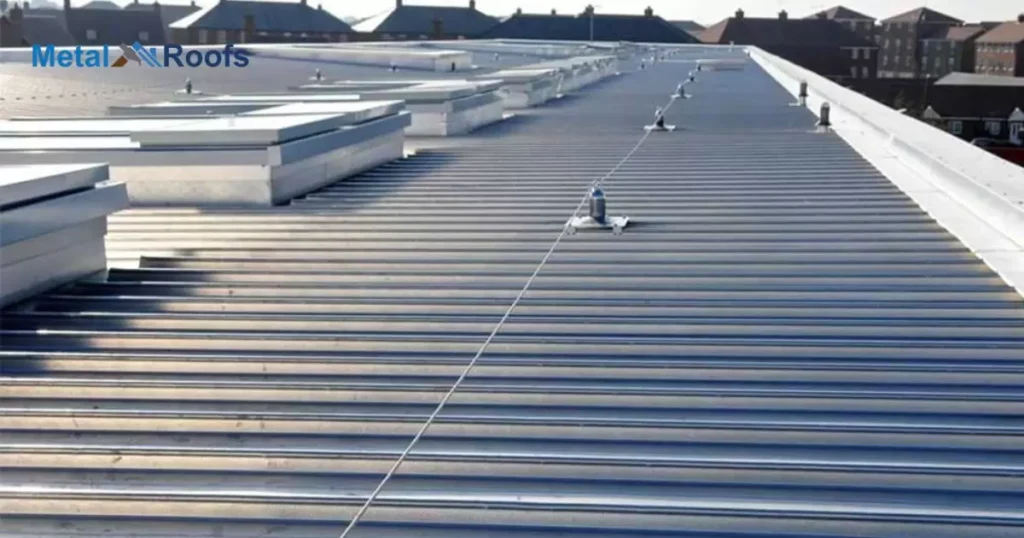
Metal roofing comes in various thicknesses, and understanding the standard roof thickness is crucial for a durable and reliable structure. The common thickness for metal roofing is measured in millimeters (mm). Generally, metal roofing thickness ranges from 0.5 mm to 1.5 mm.
The choice of thickness depends on factors like the type of metal, local weather conditions, and the intended use of the roofing material. It’s essential to consult with roofing professionals to determine the optimal thickness for your specific needs, ensuring your roof provides long-lasting protection against the elements.
Start Shingles Straight On A Non-Square Roof
When installing metal roofing, beginning shingles straight is crucial, even on a non-square roof. Precision matters. If the starting point is off, it can throw off the entire installation. Ensure the first shingle aligns accurately with the roof’s edge, maintaining a straight line.
A non-square roof presents challenges, but starting straight sets the tone. This simple step aids in maintaining uniformity, preventing installation issues down the line. So, whether your roof follows perfect angles or not, the key is a straight start for durable and visually appealing metal roofing.
Type Of Plywood Used On Roofing
When it comes to the type of plywood used on roofing, it plays a crucial role in providing a sturdy foundation for various roofing materials. The right choice ensures durability and long-lasting performance. Here’s a quick breakdown:
CDX Plywood: Commonly used in roofing, CDX plywood is cost-effective and suitable for structural applications.
OSB (Oriented Strand Board): Another popular choice, OSB offers good strength and moisture resistance, making it ideal for roof sheathing.
Advantech Plywood: Known for its superior performance, Advantech plywood is highly resistant to water damage and provides a reliable base for roofing materials.
Plywood Thickness: The thickness of the plywood matters. Common options include 1/2-inch and 5/8-inch thicknesses, providing the necessary strength for roofing projects.
Understanding the type and thickness of plywood used on roofing is essential for ensuring a robust and reliable structure over time. Choose the right plywood to safeguard your roof against the elements.
Install Roll Roofing On Low Slope Roofs
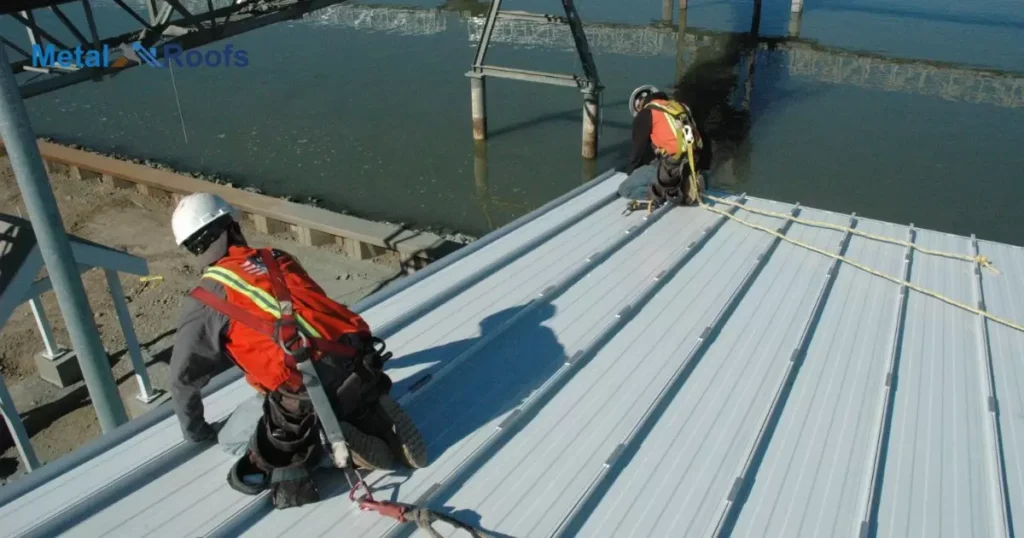
When it comes to low-slope roofs, installing roll roofing is a smart choice. The process is straightforward, making it an accessible option for many homeowners. Just roll it out and secure it, a quick and efficient solution for protecting your home.
Roll roofing provides a reliable barrier against the elements, ensuring that your low-slope roof stays watertight. Its simplicity doesn’t compromise on effectiveness, making it a practical and affordable choice for those looking to enhance their roof’s durability.
Install Felt Underlayment For A New Roof
When putting up a metal roof, it’s crucial to start with a solid foundation. Begin by installing a felt underlayment. This thin layer acts as a protective barrier, shielding your home from moisture and enhancing the roof’s durability. It’s a simple yet essential step in ensuring your new metal roof stands the test of time.
Ensure a smooth installation process by carefully rolling out the felt underlayment, and securing it tightly to the roof deck. This extra layer not only safeguards your investment but also provides an added layer of insulation, contributing to a more energy-efficient home. Remember, a little attention to the underlayment goes a long way in maintaining the integrity and longevity of your metal roofing.
How To Cut Through A Tar Roof?
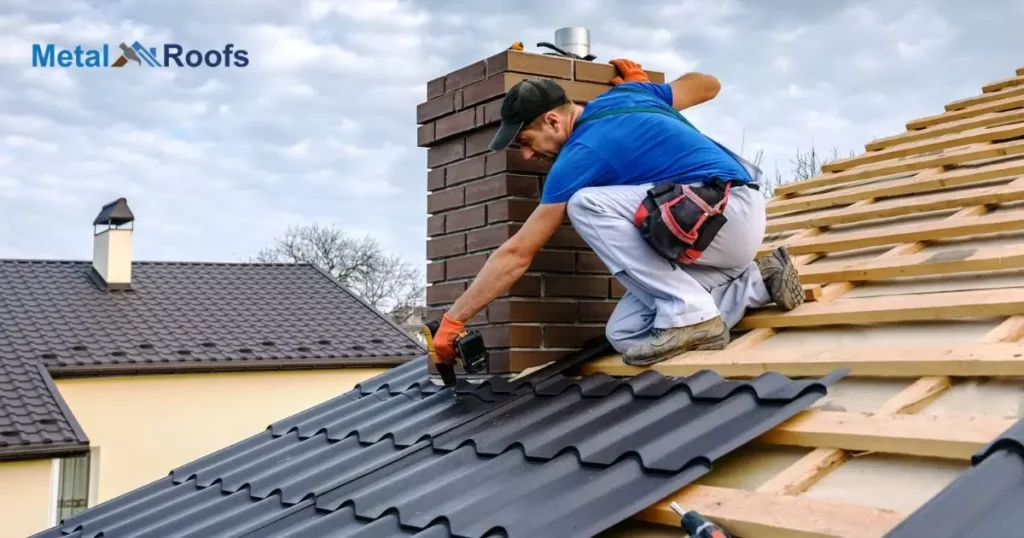
Cutting through a tar roof demands caution and the right tools. Start by selecting a sharp utility knife with a retractable blade. Ensure it’s equipped with a new blade for efficient cutting. To begin, mark the cutting line using a chalk line or a straightedge. This visual guide will keep your cut straight and precise.
When cutting, apply steady pressure, letting the tool do the work. Glide the knife along the marked line, maintaining a consistent pace. Periodically check the blade’s sharpness and replace it if needed. Completing this task with precision ensures a clean cut through the tar roof, minimizing potential issues.
Frequently Asked Questions
What are the measurements of metal roofing sheets?
Metal roofing sheets come in standard dimensions, typically ranging from 3 to 4 feet in width and 8 to 16 feet in length, providing a versatile and adaptable roofing solution.
What is the dimension of a roofing sheet?
Roofing sheets come in various dimensions, commonly ranging from 8 to 10 feet in length and 2.5 to 3.5 feet in width.
What are the dimensions of a metal roof seam?
Metal roof seams typically have dimensions ranging from 1 to 2 inches, ensuring a secure and weather-resistant connection.
Conclusion
Metal roofing comes in a range of widths, lengths, and thicknesses. Narrow panels fit curved roofs better. Long panels require fewer seams on larger roofs. Thick panels resist weather risks but add weight and cost. Choose dimensions to balance durability, cost, and installation ease.
The gauge, length, and width should match building size, climate, and budget. Standard options suit most homes but custom sizes are available. An experienced installer can help select optimal dimensions to maximize roof performance while controlling expenses. Proper measurement also minimizes labor and waste for a successful metal roofing project.
